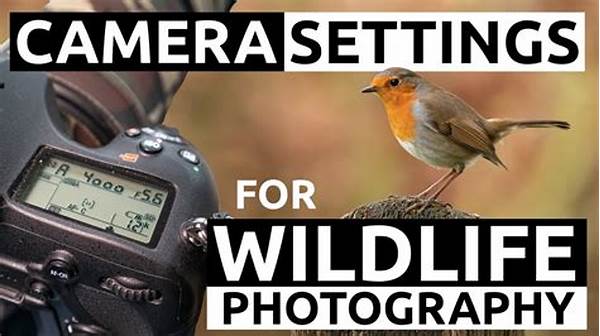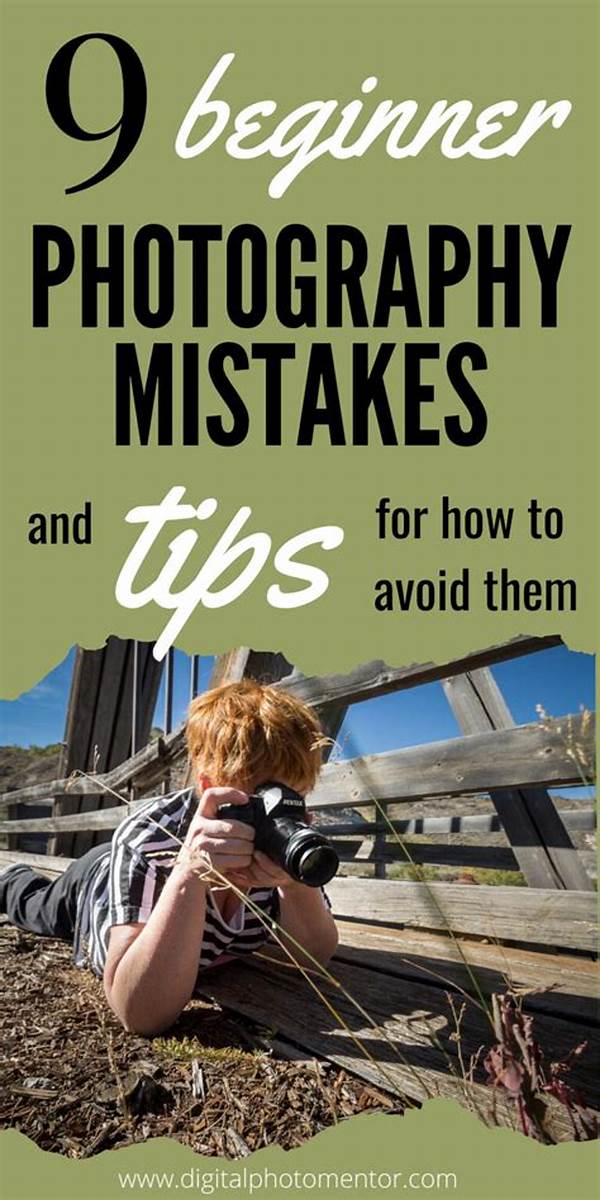Hey there, budding wildlife photographers! If you’re like me, the call of the wild is irresistible, and capturing it with your camera is the dream. However, diving into wildlife photography can be daunting with all the settings and options. Fear not! This guide is here to help you find the best camera settings for wildlife beginners. Let’s venture into the wild world of photography together.
Read Now : Colors For Professional Profile Photos
Understanding the Basics
Before heading out to capture some stunning wildlife shots, let’s cover a few fundamentals. First, understanding the relationship between ISO, aperture, and shutter speed is crucial. These three elements form the “exposure triangle,” a cornerstone of photography. For the best camera settings for wildlife beginners, you may want to start with an ISO of around 400. This setting is flexible enough for various lighting conditions, allowing you to capture detailed images without too much noise.
Next, let’s talk about aperture. A wider aperture (like f/4 to f/5.6) allows more light into the camera. This is perfect when you’re photographing animals with a clear, blurred background. Now, onto shutter speed. Fast-moving animals require a high shutter speed, so aim for 1/1000s or faster to freeze their motion. As you practice, you’ll discover the best camera settings for wildlife beginners come with a mix of experimentation and learning.
Quick Tips for Beginners
1. Start with a priority mode, such as aperture priority, to easily manage depth of field.
2. Keep your autofocus on continuous mode for tracking moving subjects effectively.
3. Use burst mode to increase your chances of getting the perfect shot.
4. Bring a tripod; stability can make all the difference in low-light settings.
5. Stay patient and quiet; wildlife photography is as much about stealth as it is about skill.
Getting the Best Shots in Various Lighting
When it comes to the best camera settings for wildlife beginners, lighting plays a pivotal role. Golden hour—the time just after sunrise or before sunset—provides ideal lighting conditions. The soft, warm light enhances images’ richness, making animals look even more magnificent. Always adjust your ISO and shutter speed according to light availability to ensure that your photos aren’t underexposed or overexposed.
If you’re out in less-than-ideal, harsh midday light, consider using a polarizing filter to reduce glare and enhance color saturation. It’s a simple addition that can transform your pictures. And remember, the best camera settings for wildlife beginners are also about improvisation. Don’t shy away from making adjustments on the spot. As the saying goes, practice makes perfect, especially when mastering this exciting form of photography.
Read Now : Image Watermarking Software Free
Exploring With Different Lenses
Wildlife photography is also about the lenses you choose. A telephoto lens, ideally in the range of 300mm or more, allows you to capture animals without getting too close and startling them. This is crucial for both your safety and theirs. Zoom lenses are versatile and a good fit for best camera settings for wildlife beginners, permitting you to capture everything from close-ups to broad landscapes.
Enhancing Your Skills With Practice
Practice makes perfect! One of the best things about embarking on this photography journey is using trial and error. Frequent trips outdoors with your camera will allow you to encounter a mix of scenarios that demand different best camera settings for wildlife beginners. Over time, you’ll learn to adapt quickly and select the right settings instinctively.
Get into the habit of reviewing your shots frequently. Zoom in on the details to evaluate sharpness, exposure, and composition critically. Note the settings used for each shot, especially those that turn out exceptionally well. This self-critique helps you grow and, soon enough, you’ll develop an intuitive understanding of best camera settings for wildlife beginners.
Developing Your Photographic Eye
All right, my adventurous friends! Let’s delve into something a bit different—developing that keen photographic eye. You know the one, where you look at a scene and just know there’s a killer photo waiting to be snapped. The best camera settings for wildlife beginners might set you up, but it’s your unique perspective that’ll make your shots pop. Unlike a math quiz, there’s no wrong answer here!
The trick is to be observant. Look around, notice patterns, shapes, and contrasts. Maybe the way the light breaks through leaves or the playful antics of a squirrel catching sunlight just right. That’s your opportunity. Pair your newfound eye with the best camera settings for wildlife beginners, and voila, you’re not just snapping pics; you’re creating art chronicles of the animal kingdom. Keep that curiosity vibrant, friends!
Finding Your Style & Wrapping It Up!
And just like that, you’re journeying into wildlife pics with excitement and skill. Remember this—best camera settings for wildlife beginners are your guide, but only part of the exciting equation. As you continue snapping those shots, you’ll start developing your style. Maybe it leans towards moody nights or vibrant dawnings. Whatever it is, embrace it! Wildlife photography is about connection, both with nature and yourself.
Keep exploring and testing, friends. Wildlife photography is never a destination—it’s a lifelong journey. Stay curious, and keep those lenses focused on the awesome wilderness around you!



